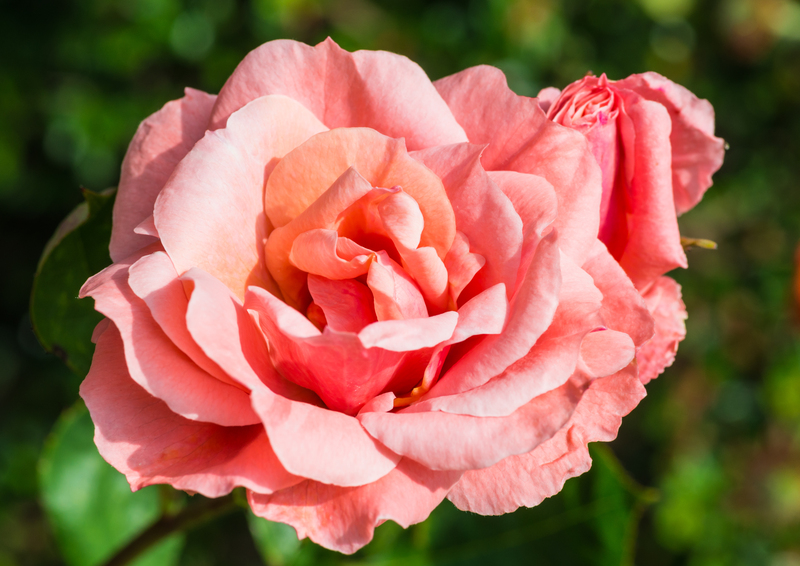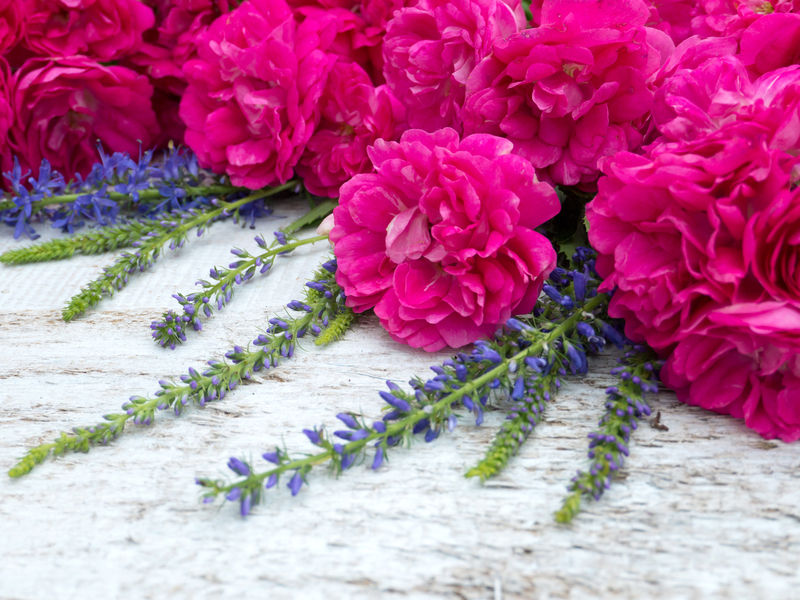Keeping Paws and Blossoms in Harmony
Posted on 26/06/2025
Keeping Paws and Blossoms in Harmony: A Comprehensive Guide
For pet lovers, our homes and gardens are more than just living spaces--they're sanctuaries. Many of us dream of verdant gardens and vibrant houseplants while also cherishing the playfulness and companionship of our beloved pets. But how can we truly achieve a safe and flourishing environment for both our furry friends and our favorite flora? Keeping paws and blossoms in harmony may seem challenging, yet it is absolutely attainable with knowledge, planning, and care.
Why Is Harmonizing Pets and Plants So Important?
Dogs, cats, and other pets are naturally curious. On the other hand, many common plants--including some popular houseplants and garden varieties--can be toxic to animals if ingested or even touched. Likewise, rambunctious pets may unwittingly damage delicate plants. The harmony between pets and plants isn't automatic; it comes from understanding, prevention, and creating an environment where both can thrive without risk.
- Toxicity concerns: Many popular plants, such as lilies, philodendrons, and sago palms, contain compounds harmful to dogs and cats.
- Pet safety: Ingestion, skin contact, or even inhalation of pollen or spores can cause symptoms ranging from mild digestive upset to severe poisoning or death in extreme cases.
- Plant wellbeing: Pets may dig up roots, chew on leaves, or upend pots, which can kill your favorite greenery.
Achieving a balance--keeping paws and blossoms in harmony--protects your pets, preserves your plants, and ensures peace of mind for everyone in your household.

Selecting Pet-Friendly Plants: Safe Choices
Choosing the right greenery plays a pivotal role in maintaining a pet-friendly home and garden. Here is a detailed look at non-toxic options for pet owners who want to prevent unpleasant surprises.
Top Non-Toxic Houseplants for Pet Owners
- Spider Plant (Chlorophytum comosum): Safe for both cats and dogs, this resilient plant also purifies household air.
- Bamboo Palm (Chamaedorea seifrizii): A tropical beauty that adds vibrancy without worry.
- Boston Fern (Nephrolepis exaltata): Famous for its feathery fronds and complete absence of toxins.
- Areca Palm (Dypsis lutescens): Elegant and known to pose no threat to fuzzy roommates.
- Calathea: An attractive, pet-safe choice with striking leaf patterns.
- Orchid (Orchidaceae): Provides a splash of color and is safe for cats and dogs.
- African Violet (Saintpaulia): Compact, colorful, and harmless to pets.
Safe Garden Plants
- Sunflowers (Helianthus annuus): Bright, cheerful, and non-toxic to pets.
- Snapdragon (Antirrhinum majus): Adds variety to the garden without poisoning risks.
- Marigolds (Calendula officinalis): Not only safe, but also a natural pest repellent.
- Rosemary (Rosmarinus officinalis): An aromatic herb that is safe for dogs and cats.
- Camellia (Camellia japonica): Provides luxurious blooms without endangering pets.
Opting for these non-toxic plants is a fundamental step in keeping paws and blossoms in harmony.
Recognizing and Avoiding Dangerous Plants
Just as important as knowing safe options is being vigilant about which plants to avoid. Some of the most popular ornamental plants--indoors and outdoors--pose serious threats to pets' health. Here's a guide to the most common offenders:
- Lilies: Extremely toxic, especially to cats; ingestion of any part can cause kidney failure.
- Sago Palm: Even a small amount can cause severe liver damage in pets.
- Philodendron: Causes irritations, vomiting, and swelling if eaten.
- Dieffenbachia (Dumb Cane): Can cause burning, swelling, and breathing difficulty.
- Oleander: Ingestion can be fatal to both cats and dogs.
- Azalea/Rhododendron: Serious heart issues can result from even a few leaves.
- English Ivy: Common indoors, but toxic to pets when eaten.
- Aloe Vera: While healing for humans, its saponins are dangerous for animals.
If you are unsure about a specific plant, consult reliable resources like the ASPCA's toxic and non-toxic plant list or speak with your veterinarian.
How to Pet-Proof Your Houseplants and Garden
Achieving harmony between pets and plants involves more than just plant selection. By employing the following strategies, you can ensure your pets and your blossoms coexist safely and your living environment remains tranquil and beautiful.
Smart Placement and Barriers
- Hang baskets: Place houseplants in hanging baskets or on elevated shelves beyond your pet's reach.
- Use plant stands: Tiered or tall stands keep foliage away from curious noses and paws.
- Create plant "zones": Designate certain rooms or garden sections as pet-free sanctuaries for more delicate or toxic plants.
- Install fencing: Small fences or plant cages deter digging and chewing in garden beds.
Deterrents and Training Techniques
- Spray deterrents: Bitter apple or citrus sprays can discourage chewing.
- Provide alternatives: Offer cat grass, catnip, or safe chew toys to redirect destructive habits.
- Reward training: Positive reinforcement encourages pets to avoid off-limits areas.
- Consistent supervision: Observe and correct interactions between pets and plants early on to establish safe habits.
Maintaining Garden Health with Pets Around
- Select robust species: Hardy, resilient plants like ferns, palms, and succulents can better withstand the occasional bump or nibble.
- Avoid chemical fertilizers and pesticides: Opt for organic gardening methods to prevent accidental poisoning.
- Clean up regularly: Promptly remove fallen leaves, berries, and other plant debris, which may entice pets.
Enrichment for Pets: Keep Them Busy and Less Interested in Plants
Boredom is a significant factor driving pets to interact with--and potentially damage--plants. Ensuring your pets have enough stimulation can greatly reduce the likelihood of plant destruction and cement a peaceful environment.
Ways to Keep Pets Engaged
- Interactive toys: Treat-dispensing balls, puzzle feeders, and scratching posts keep pets entertained and distracted.
- Regular play sessions: Daily exercise satisfies their curiosity and makes them less likely to explore your planters.
- Safe outdoor time: A secure backyard or leash walks let pets burn off energy far from your garden beds.
- Catios and enclosed patios: These special outdoor spaces allow safe exploration without threatening your blossoms.
- Window perches: For indoor-only cats, a window bed offers entertainment away from your prized houseplants.
Recognizing Signs of Plant Toxicity in Pets
Despite your best efforts to maintain harmony between paws and blossoms, accidents can happen. It's vital to recognize symptoms of plant toxicity quickly, as prompt action makes a huge difference in outcomes.
Common Signs of Toxic Plant Exposure
- Digestive upset: Vomiting, diarrhea, drooling, or loss of appetite.
- Behavior changes: Lethargy, agitation, confusion, or weakness.
- Oral irritation: Pawing at the mouth, swelling, or excessive licking.
- Breathing difficulties: Coughing, wheezing, or labored breathing.
- Seizures or collapse: In severe cases.
If you suspect your pet has consumed or chewed on a potentially toxic plant, contact your veterinarian or an animal poison control center immediately. Quick action can save lives.
Pet-Safe Gardening: Outdoor Bliss for All
Gardens offer a wonderful space for both your animals and plants to thrive together, but outdoor spaces bring unique challenges. To keep paws and blooms in perfect harmony outdoors, consider the following additional tips:
- Choose native, non-toxic plants: These are best suited to your climate and less likely to harm pets.
- Secure garden borders: Ensure fences are tall and deep enough to deter canine escape artists or curious cats.
- Use raised beds and removable covers: These help protect newly planted areas from digging paws.
- Avoid cocoa mulch: Its theobromine content is toxic to dogs and can be fatal if ingested.
- Provide pet zones: Sandboxes or grassy areas direct playing and digging away from flower beds.
Creative Home Design for Pet-Plant Coexistence
More pet owners are seeking stylish ways to blend greenery with animal-friendly design. Here are some of the leading trends and best practices:
- Vertical gardens: Living walls or vertical shelves save space, look stunning, and keep plants out of reach.
- Potted "gardens" on furniture: Use bookcases, mantels, or high counters.
- Enclosed terrariums: Safe for plants and keeps pets out.
- Wall-mounted planters: Add green accents without taking up valuable floor space.
- Custom furniture with built-in planters: A pet-proof way to showcase greenery stylishly.
Designing your space with both pets and plants in mind isn't just practical, it's also a modern, elegant approach to home decor.

Helpful Resources for Further Guidance
The journey toward pet-plant harmony is ever evolving. For more information and support, refer to these trusted sources:
- ASPCA Animal Poison Control: Toxic and Non-Toxic Plants
- Pet Poison Helpline
- Pet-Friendly Houseplants by Gardener's Supply
- AVMA Guide to Household Hazards
Conclusion: Flourish Together--A Home Where Paws and Blossoms Thrive
With careful planning, ongoing education, and a dash of creativity, it is entirely possible to nurture a vibrant, green home that's as safe for your pets as it is beautiful. From selecting the right plants and training your pets, to clever home design, keeping paws and blossoms in harmony brings joy and peace to every member of your household--furry, leafy, and human alike.
Remember:
- Be informed about plant toxicity.
- Choose pet-safe plants whenever possible.
- Create clear boundaries and offer plenty of pet enrichment.
- Regularly reassess your pet-plant environment to maintain long-term harmony.
Keeping paws and blossoms in harmony is more than a goal--it's a lifestyle that brings happiness, health, and beauty to the heart of your home.

